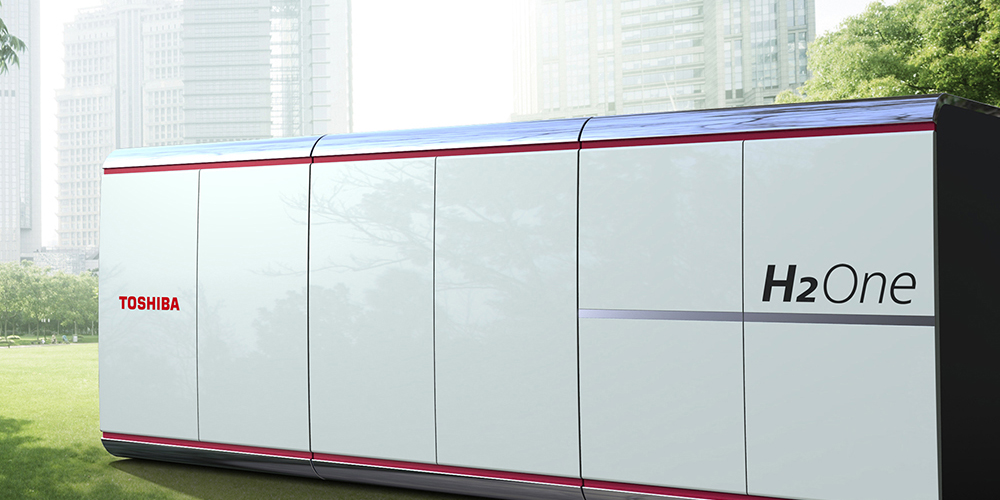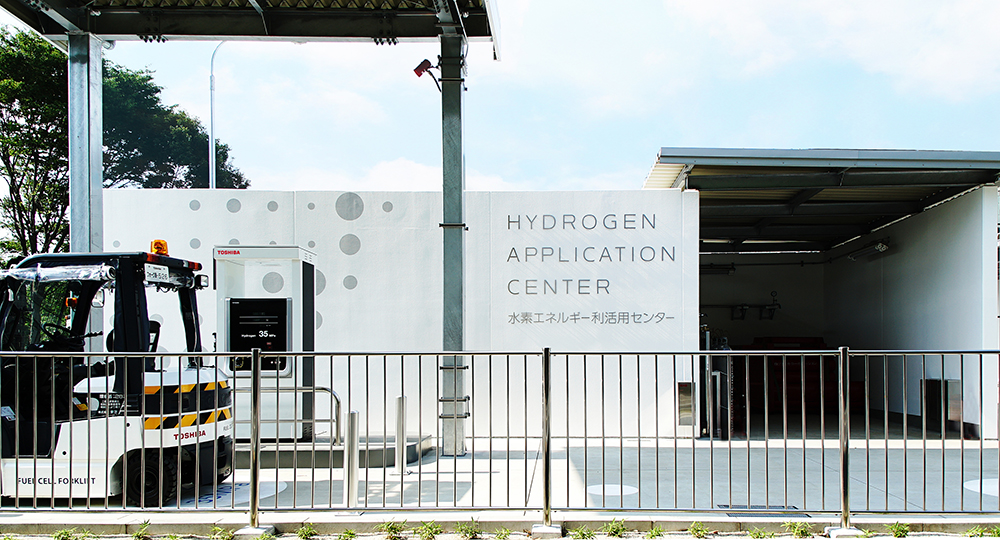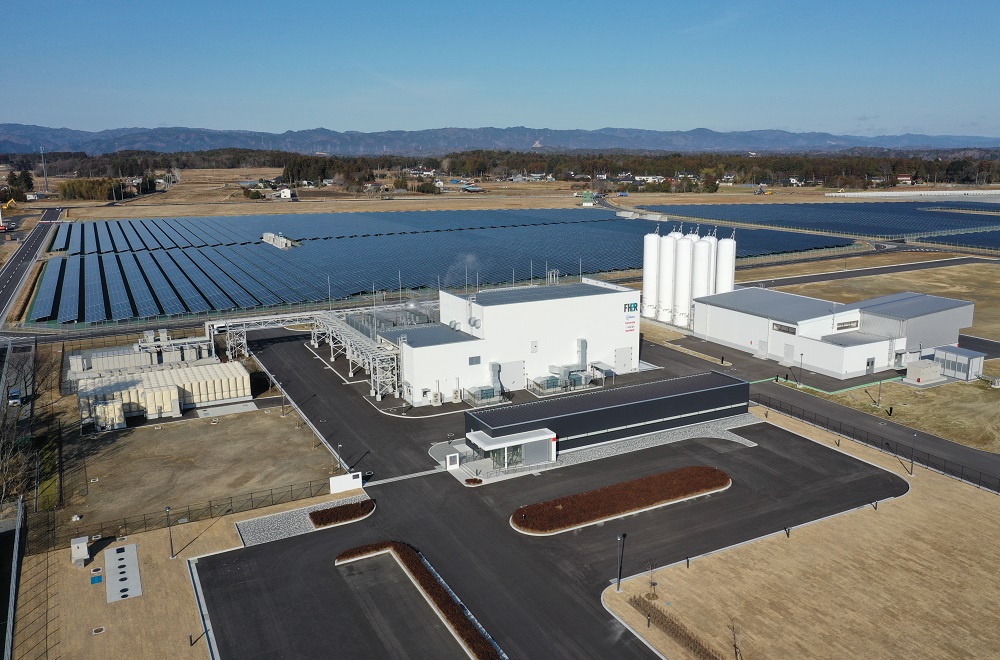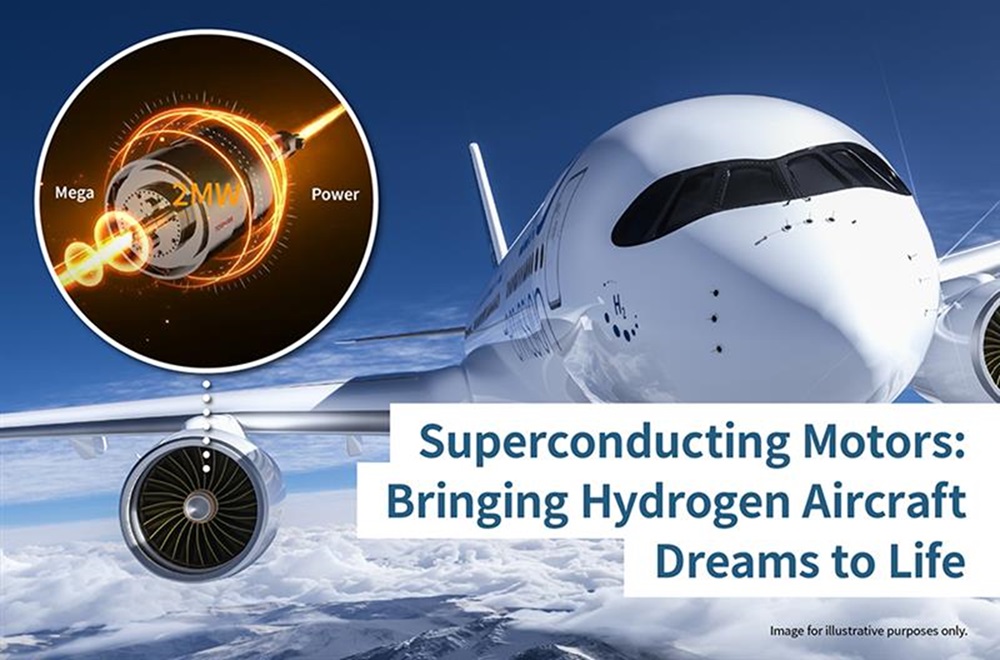Five Things Everybody Should Know About Hydrogen Energy
2018/04/02 Toshiba Clip Team

While thermal and nuclear power remain our main sources of baseload energy supply, there is increasing interest in renewables—most of us are familiar with the potential of hydro, and solar and wind power. However, there is another energy source that we need to add to that list, one that is attracting increasing attention as perhaps the most versatile energy source of tomorrow: hydrogen power generation.
As countries and companies worldwide work on ways to reduce CO₂ emissions, Toshiba is promoting advances across its energy business, including using hydrogen as a clean energy source. In this primer, we look at the basics of hydrogen, including what it is and how it generates electricity, and what Toshiba is doing to promote hydrogen power.
1. Hydrogen can be used to generate electricity
Hydrogen is the lightest and most abundant element in the universe. In general, hydrogen usually refers to hydrogen molecules (H2) that bind together two or more atoms. On Earth, molecular hydrogen is rare in its pure form, but it’s all around us in compounds, most notably water (H2O). Producing hydrogen is quite simple. Remember studying electrolysis of water in science class? That’s how hydrogen is produced, using electricity to split H2O into its components, hydrogen and oxygen.
Generating electricity from hydrogen is also simple, the reverse reaction of water electrolysis. In other words, electricity, and hot water too, can be produced through the chemical reaction between hydrogen and oxygen.

Once hydrogen has been produced it can also be stored, and used to generate electricity just when it is needed. That’s done by a fuel cell, which produces electricity by triggering the chemical reaction between hydrogen and oxygen.
2. Hydrogen is clean and very versatile
The great thing about generating electricity from hydrogen is that it is completely free of CO₂ emissions; it’s a clean, environmentally friendly process. Hydrogen can also be produced from fossil fuels, particularly reformed natural gas, and many of today’s fuel cell vehicles (FCVs) are powered in this way. However, if hydrogen is produced purely with renewable energy sources such as wind, hydro and solar power, we have a process that is CO₂-free all the way from hydrogen production to power generation.
That’s not all. Hydrogen is really versatile. It can be used to power everything from boats to spaceships, along with office buildings, transport hubs and buses and cars. And because hydrogen can be stored, it can also be transported to places where it is needed.
3. Toshiba is developing key technologies for the hydrogen economy
Any road map to a low carbon society recognizes the importance of hydrogen energy. Toshiba has long devoted resources to developing essential technologies and systems. Today, the company’s most advanced system is the H2One.
H2One integrates all the elements required to realize a hydrogen-based autonomous energy supply system: a solar power system to generate electricity; a stationary battery to store it; an electrolysis unit; a hydrogen storage tank; and a fuel-cell stack. It’s the ultimate in current clean energy solutions.

It also has other advantages. As we’ve already noted, renewable energy is increasingly important, but its output varies with time of day, the weather and even the season. Hydrogen ends the uncertainty. Like electricity in a battery, it is stored energy, and can compensate for the instability of supply from renewables. Unlike batteries, hydrogen does not deteriorate over time, and can be stored for as long as necessary before it is used.
In looking at how best to promote the transition to a hydrogen economy, the Toshiba engineers and product developers who worked on H2One took a good look at how development of renewables is opening the way to more distributed power generation, and recognized that H2One can help achieve local production for local consumption, and self-sufficiency.

Another inspiration came from considering recovery from disasters, with H2One delivering essential lifelines. In fact, that’s already been realized at Kawasaki Marien, a public space in Kawasaki, south of Tokyo. The H2One installed there usually provides electricity, but in the event of a disaster it will use stored hydrogen to provide 300 evacuees with electricity and hot water for a week.
See more about this at https://www.global.toshiba/ww/products-solutions/hydrogen.html
4. Hydrogen delivers real-world solutions
The proof of any technology is in its real-world performance. H2One is proving its usefulness in multiple and very different locations. Here are some of them.
H2One at Musashi Mizunokuchi Station

Most of the 80,000-plus people who take a Nambu Line train from East Japan Railways’ Musashi Mizunokuchi Station probably don’t realize that it’s the first station anywhere to be powered by an H2One. In day-to-day operation the unit lights the platforms. In summer, the hot water from the generation process is diverted to mist poles that cool the station; in winter, it is circulated through benches to warm them, making passenger wait times more comfortable.
In emergencies and power outages, the H2One operates autonomously, providing uninterrupted, off-grid energy supply to light part of the station concourse and its lavatories.
Press Release
H2One in construction industry
In the construction industry, there is a global movement to realize zero energy buildings (ZEB) that cut annual energy consumption to zero, or as close as possible, by using renewable energy for lighting, heating, ventilation and air-conditioning. In Japan, Tokyu Construction using an H2One to support development of ZEB at its Tokyu Construction Institute of Technology. An integral solar power system and H2One produce hydrogen that is stored and used in fuel cells when necessary.
Press Release
Even forklifts can be powered by hydrogen

Toshiba’s Hydrogen Application Center is putting hydrogen as fuel to daily use. Located in Fuchu Complex in western Tokyo, one of Toshiba’s largest facilities, it is built around a newly designed H2One that uses renewable energy to produce and supply hydrogen for fuel-cell forklifts operating in the complex. The forklifts emit no CO₂ in operation and realize totally CO₂-free operation.
5. Hydrogen is the energy of the future
Toshiba’s “Hydrogen Energy Journey” VR movie a big hit at EXPO 2017 Astana
EXPO Astana 2017 in Astana, Kazakhstan, opened its doors to the public on June 10, 2017, to promote a major theme, “Future Energy.” At the Japan Pavilion, Toshiba is pointing the way to that with “Hydrogen Energy Journey.” Using the latest VR technology, this short movie makes the audience a part of the H2One electricity generating process; they start the journey as a sunlight, get turned into electricity by solar power electricity generation, and then into hydrogen.

For more on Toshiba’s H2One, please visit https://www.global.toshiba/ww/products-solutions/hydrogen.html
![]()







